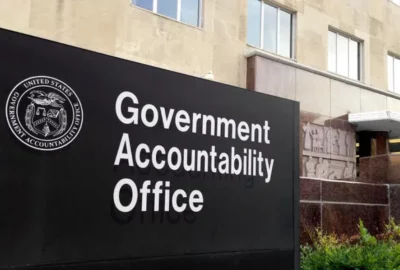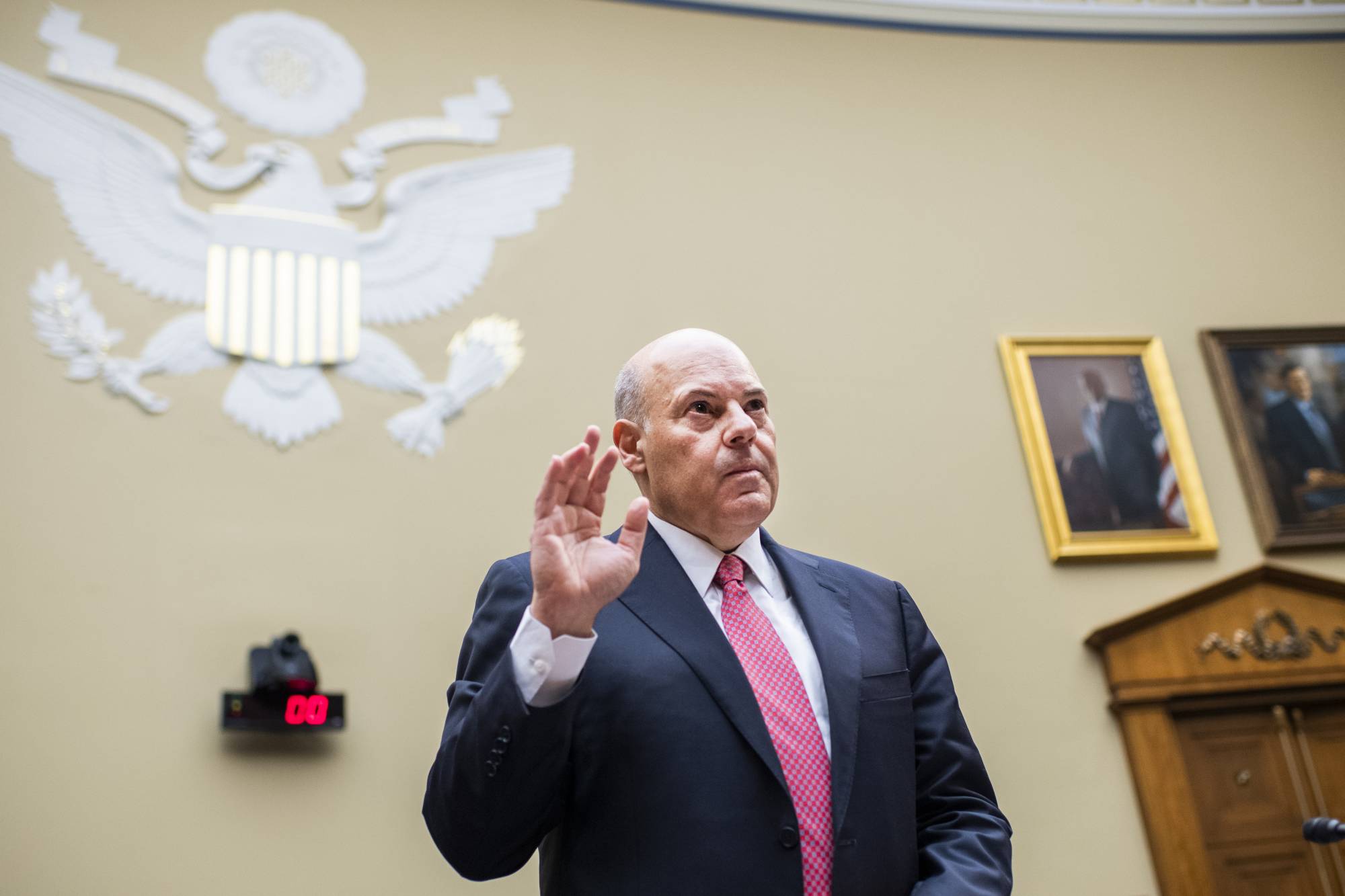Hubbard Radio Washington DC, LLC. All rights reserved. This website is not intended for users located within the European Economic Area.
On Air: Federal News Network
Trending:
The new Defense Department health records system isn’t quite out of the woods either
After a multi-year effort, Defense Department health and tech officials got a new electronic health record system completed.
After a multi-year effort, Defense Department health and tech officials got a new electronic health record system completed. The last deployment to place in March. The Government Accountability Office finds, user satisfaction with the new system still doesn’t match that of the old system. The Federal Drive with Tom Temin got more from the GAO’s director of information technology acquisition management, Carol Harris.
https://www.gao.gov/assets/d24106187.pdf
Tom Temin So is this a case of the new system is finally up and running. The bugs are out and people just don’t like it? Or is there more going on here?
Carol Harris Well, I think it’s a little bit of both. As you said, DoD has fully completed their deployment of MHS Genesis to all of its military treatment facilities around the world, and their final site was at the Federal Health Care Center in North Chicago. Now, this [Federal Health Care Center (FHCC)], the center is somewhat unique because it’s actually a joint facility with VA. And so when DoD and VA implemented the federal electronic health records system there, they still have additional work that they need to do. There’s additional opportunities for integration between the two departments workflows in particular. So for example, there are 69 topics to address to bridge the differences between both DoD and VA. Now 31 topics have a path forward to integration. 38 of them do not. And these topics include patient care locations, pharmacy organization, and the dental module. So I’ll give you an example at the Federal Health Care Center. It has a single physical pharmacy that provides care for both the DoD and VA patients. But DoD and VA have different medication costs, different co-pays, different billing systems. And so ultimately, the two departments decided that a single system option just wasn’t viable. And so what’s happening now is pharmacy end users, including pharmacists, are having to switch between the DoD and VA pharmacies in the system. And then for the dental module, the dental staff are having to use different systems for the DoD and VA patients. So as a result, the clinic actually has two computers at each workstation so that both systems can be used simultaneously.
Tom Temin Hello 1970s again.
Carol Harris Right. So clearly there’s still work that needs to be done to get things further integrated at the federal health care center in North Chicago. But as you said earlier, user satisfaction is also a major issue. So DoD has two years worth of survey data. DoD’s 2023 survey showed improved satisfaction from the previous year, but system users are still generally dissatisfied with system response time, with the users ability to work as efficiently as possible, as well as their ability to deliver high quality care. So, for example, like when you take a look at the quality care aspect in 2023, only 29% of MHS Genesis users agreed that the system enabled them to deliver high quality care, compared to 46% of the legacy system users. And even 50% of the private sector users of the same commercial system that was just deployed.
Tom Temin Sure. So a lot of issues here talking about satisfaction. It looks like nobody loves any of the systems. I mean, the legacy system has a 56% patient centered care rating. Everything else is below 50. They just like the new one a little bit less than the old one.
Carol Harris Right. And so our work on leading practices emphasizes that agencies should proactively be employing these user satisfaction data to improve the performance of the system and then also monitor progress against goals to understand whether user needs have been met. And so at this time, what we found is that DoD hasn’t yet established any goals or plans for improving survey results. So we did go ahead and make a recommendation in that vein.
Tom Temin We’re speaking with Carol Harris, director of information technology acquisition management at the GAO. And what was that recommendation specifically to get the satisfaction improved?
Carol Harris Well, it was specifically for DoD to establish user satisfaction goals and from there to monitor progress against those goals.
Tom Temin It’s like a FEVS score for the health system, you might say.
Carol Harris Yeah, exactly.
Tom Temin But to the other issue, where a couple of their several, dozen integration issues don’t seem to be resolvable. How does that square with the ultimate vision of this billions and billions and billions of spending by both agencies, VA and DoD for the specific purpose of having a single interoperable record?
Carol Harris Right. Well, in the case of the federal health care center in North Chicago, duty and VA said that there are legal and policy barriers that are precluding them from fully integrating. But when we dug down deeper with those departments, they couldn’t be specific about what those barriers are. And so regardless of what they are, if additional steps aren’t taken to rectify this, they’re not going to meet that integration goal. And DoD and VA have been working on the exchange of electronic health records since 1998. This is a long standing problem. So we did make a recommendation for both departments to address the specific barriers that are halting the integration at this particular site.
Tom Temin Because in the 1990s, the advent of e-government, when large digital platforms, it was just a continuation of the commercial off the shelf adoption idea. One of the notions was, well, the government, rather than adopt software to what government does, the government should adopt its business practices to match what the software does. That was one strain of thinking. Has anyone looked at whether the pharmacy practices and the other practices that are incompatible, those could be changed so that they work together with the software.
Carol Harris And I think what DoD and VA currently, what their position is that there are legal and policy barriers that are preventing them from addressing those workflows to match the commercial workflows in order to be fully integrated. So both departments need to come to terms with this and to rectify the situation, because having two computers at each workstation is not a sustainable solution.
Tom Temin Right. There could be, I can think of ways they could get around it, but those are always more complicated than they seem like because it takes programing. And in the meantime, as the VA creeps up on more and more deployments, it sounds like there will be other instances of joint locations. This is not the only one that’s cooperated or is it?
Carol Harris This is the only one where there’s a joint facility. However, DoD and VA still need to have a solution where they’re able to exchange the electronic health records. So they’re still going to have to come up with ways to be able to do this. So it’s still a very long journey for the two departments. And while they are acquiring the same commercial system again, the two departments have very different workflows in different areas. As I mentioned, with the pharmacy and with the dental ones, those are just some examples, but there are many. So DoD and VA are both going to have to work through this for quite a long time. And at this time, VA has halted their implementation of their system for now. But they did proceed forward with the North Chicago site because DoD needed to complete theirs. So there’s still a lot of learning that can take place from this particular site. But again, a long journey for the two.
Tom Temin And do you sense that there may be a type of hybrid solution where no, they’re never going to be compatible in these areas. But at the point of departure from DoD, the record moves to VA and then VA updates it with its pharmacy and other practices, and you kind of have a virtual, I don’t know, for lack of a better word, compatibility.
Carol Harris Yeah, I could see that certainly. And it’s going to be up to the two departments to make business decisions about how that’s going to look like. And so at this time I know that there’s work ongoing for that, but it’s still quite a long road to hash out every single aspect of the health care system for the two.
Tom Temin And briefly, you had some other recommendations besides establishing user satisfaction goals. Maybe highlight those for us.
Carol Harris Sure. So in addition to addressing those specific barriers to halting integration at the joint facility, we also made recommendation on providing an alternative to the current dental module. The module is called dendrites, and it’s just not able to scale at the rate that is necessary for both DoD and VA. And so problems with its module began as early as October of 2018. Their workaround had been to turn off a vital interface for sharing patient, dental and medical records for dendrites. And that’s really kept it minimally functional at this point. So since the program office has been unable to correct those problems, they have begun work to identify alternatives that the problem is there no dates or estimates for when the dendrites issue is going to be either resolved or a plan or schedule for identifying those alternatives. So we made a recommendation in that vein.
Tom Temin And the recommendations get pretty much agreement from the department.
Carol Harris Well, VA concurred with the recommendation that we made to them in terms of working with DoD to address those integration issues. DoD also concurred with that recommendation, but they only partially concurred with the remaining ones, although in their comment letter they didn’t specifically cite what their disagreements were. So we’re going to continue to monitor the recommendations and what actions that they’re going to take, and hopefully they will fully implement.
Copyright © 2024 Federal News Network. All rights reserved. This website is not intended for users located within the European Economic Area.
Tom Temin
Tom Temin is host of the Federal Drive and has been providing insight on federal technology and management issues for more than 30 years.
Follow @tteminWFED
Related Stories
Related Stories
-
Problems surface in government audits of trillions in grants Agency Oversight
-
DeJoy agrees to pause some USPS facility changes until 2025 Agency Oversight





